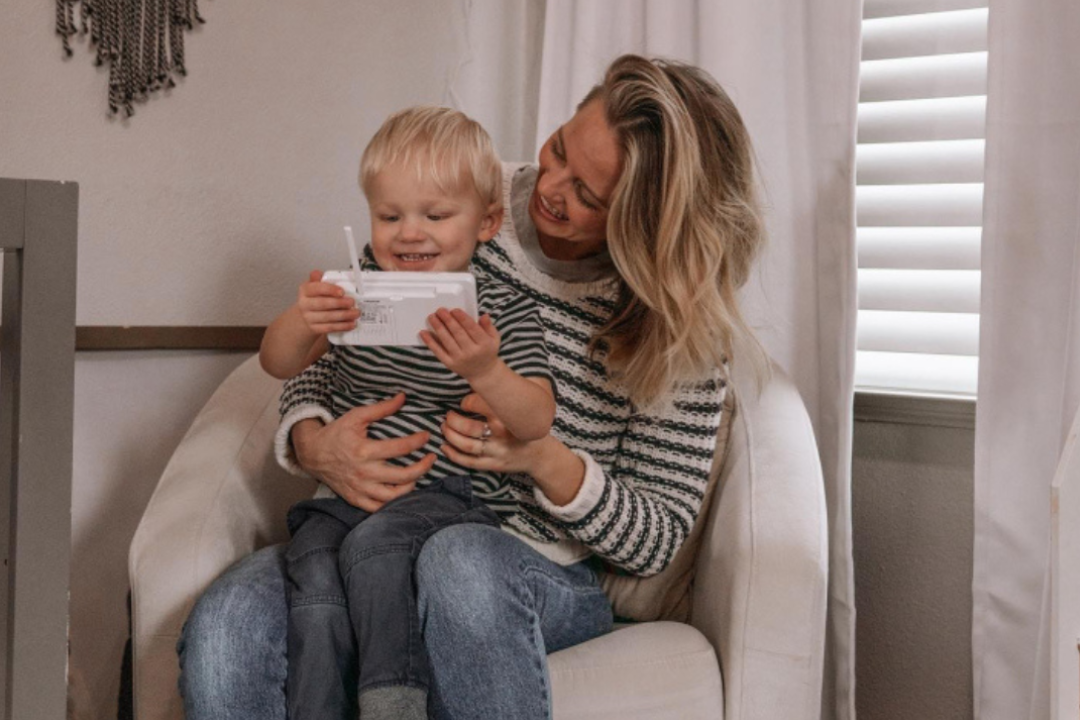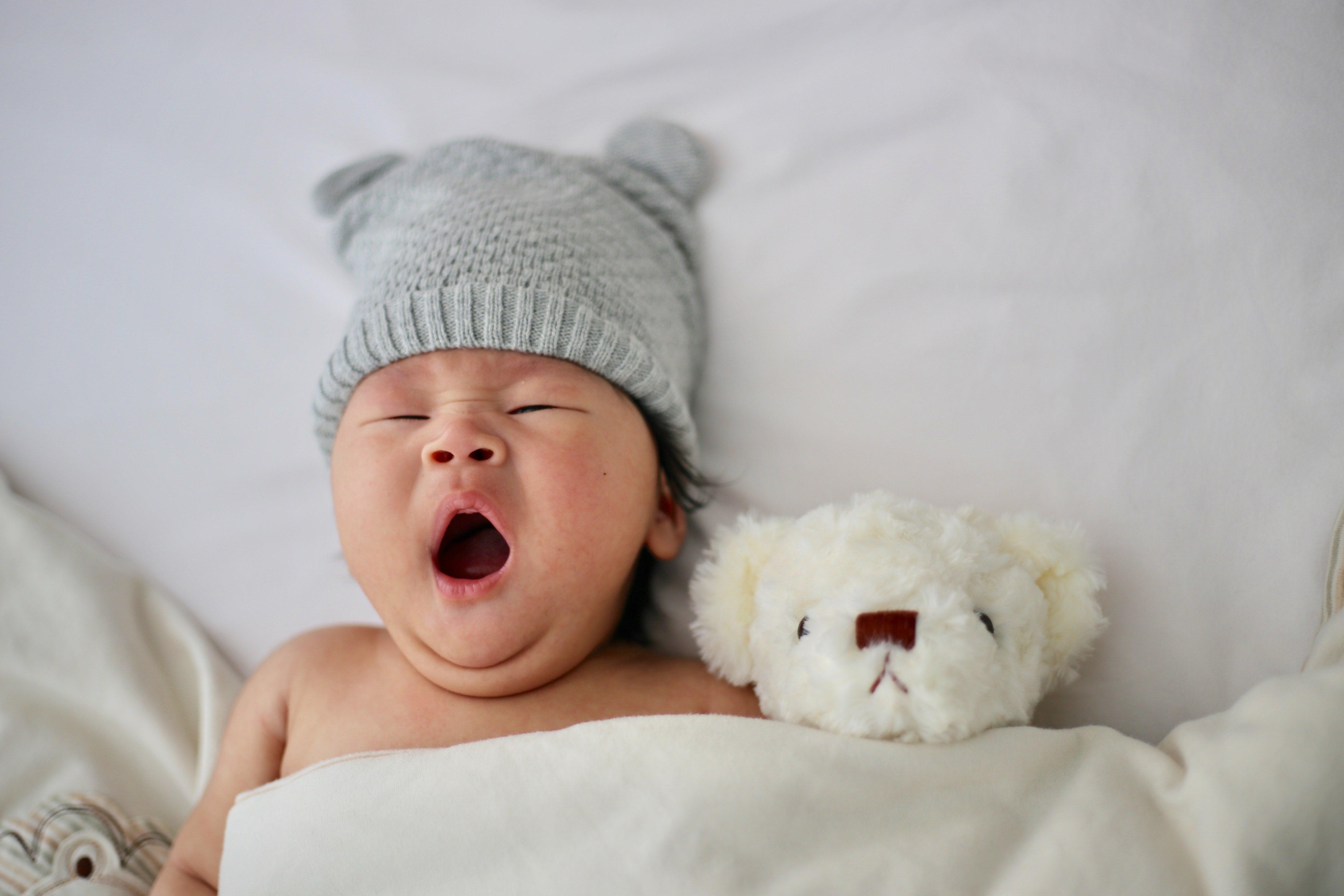Studies have shown that adequate sleep significantly contributes to an infant’s overall cognitive, physical, and mental development.
As a parent, it’s only normal to try and make your baby’s cot as comfortable as possible. This brings us to possibly the most frequently asked question about baby sleep: when can your baby sleep with a pillow? It is recommended that you wait to introduce your little one to a pillow until they are just over two years old.
In this article, we will delve deeper into the potential risks of an infant sleeping with a pillow, when exactly your baby can sleep with one, and more!
At What Age Can a Child Sleep With a Pillow?
According to the NHS, infants should sleep on a firm mattress without additional beddings or soft objects, including pillows. This is to reduce the risk of Sudden Infant Death Syndrome caused by suffocation.
An infant’s brain is not fully developed; therefore, your baby cannot identify when a pillow obstructs their airway. And if they do, chances are your child might not have the ability to free themselves from the obstruction.
Placing your baby to sleep with a pillow may also lead to overheating. Most pillows (including those designed for babies) are made from unbreathable fabric such as polyester. This can cause your little one to sweat excessively.
What’s more, it may also increase the heat underneath your baby’s head, leading to temperature fluctuations in the body. High temperatures in your child’s body may lead to hyperthermia, which is life-threatening.
Does this mean that it’s unsafe for a toddler to sleep with a pillow?
It is recommended to wait until your child is old enough to transition to a typical bed. This is because the pillow may still get caught in the cot's slats which may obstruct your baby’s airways leading to suffocation.
However, it is vital to keep an eye on your little one even after they have transitioned to an open bed. One of the best ways is to use a reliable video baby monitor such as the Babysense V43.
Does Putting an Infant to Sleep Without a Pillow Cause Flat Head Syndrome?
There are tons of sources circulating the internet claiming that putting your infant to sleep without a pillow may cause flat head syndrome. This is basically a flat spot on an infant’s head, usually caused by placing your child to sleep on one side for a long time.
However, this is a myth. There are many other ways you could prevent your baby from developing flat head syndrome, apart from using a pillow. But first, let’s take a look at other causes of this developmental syndrome.
Prematurity
Premature babies are always at a greater risk of developing flat head syndrome. They spend a lot of time on their backs without being picked or moved while inside their incubators. And since premature babies have soft skulls that are still developing, they may have positional plagiocephaly (flat head syndrome)
Pressure on the Baby’s Skull During Pregnancy
Babies may also develop positional plagiocephaly during pregnancy due to the pressure on their skulls from the mother’s pelvis. Your baby may also develop this condition if you were pregnant with multiple babies.
Torticollis
This condition in infants causes the neck muscles to be so stiff that your baby cannot move their head, therefore causing the flat head syndrome.
How to Prevent Flat Head Syndrome
While flat head syndrome is not life-threatening, it isn’t desirable. The following are some things you can do to reduce the risk of your infant developing the condition.
Increase Tummy Time for Your Baby
Tummy time is known to have tons of benefits for a baby, from strengthening the neck muscles to developing their motor skills, and so on. Tummy time also reduces your child’s risk of developing flat head syndrome because they won’t spend much time on their head.
Hold Your Little One More Often
Limiting your child’s time lying on hard surfaces such as car seats and strollers significantly reduces the risk of your baby developing flat head syndrome. This is because hard surfaces put a lot of pressure on your baby’s soft skull.
Frequently Change Your Baby’s Sleeping Position
When putting your baby to sleep, it’s essential to change their sleeping position every once in a while. Doing so will ease off the pressure on your child’s head caused by sleeping in one position.
However, it is also essential to regularly check on your baby to ensure that the position you placed them in is safe and comfortable. You can do so using a top-notch baby monitor such as the Babysense V24R-2 video baby monitor.
What to Look For When Buying a Pillow for Your Toddler
Like we mentioned earlier, there is no rush in putting your baby to sleep with a pillow. So it is best to wait until your child is old enough to sleep in an open bed. If you have a toddler and feel that it’s time for them to sleep with a pillow, here are tips for choosing the perfect pillow for your little one.
Pay Attention to the Material
Like the beddings, a pillow’s material significantly determines whether or not it will be comfortable and safe for your baby.
When shopping for a pillow for your little one, always go for one made of cotton or any other breathable material. This will lower the risk of your child suffocating and having hyperthermia.
It’s also recommended to purchase a hypoallergenic pillow, especially if your child has allergies. Hypoallergenic pillows are designed to prevent mould and bacteria from growing on them, therefore preventing common allergies.
Check the Pillow’s Design
When shopping for a pillow for your baby, do not go for one that is too thick or fluffy. Pillows like that may cause your child to have difficulties in breathing. It is also recommended that you choose a pillow that is not too tall because it can strain your baby’s neck.
It is also important to go for a pillow that is free from harmful materials such as small pellets, buckwheat, and so on. These fillings could be a choking hazard if the pillow were to start leaking. Instead, choose a pillow containing memory foam or synthetic fibre filling.
Choose a Pillow That Will Provide Adequate Support to Your Baby
When shopping for a pillow for your toddler, choose one that offers a little bit of everything. This means that it should be comfortable for your baby’s head and neck but not too fluffy.
One way to check if the pillow is right is by pressing it. If the pillow doesn’t regain its shape quickly after you’ve pressed it down, then it is too soft and could lead to suffocation.
If you notice that the pillow is too hard and doesn’t make any movements when you press it, then it is too firm for your baby.
Pay Attention to the Size of the Pillow
Unlike you, your baby doesn’t require a queen-size pillow. For your child’s small head and small bed, you’ll need something between 12 and 18 inches long.
The Best Sleeping Positions for Your Infant
Since putting your infant to sleep with a pillow is dangerous, it is vital to know the safest position to place them in.
According to the American Academy of Pediatrics, the best position for babies to sleep in is on their backs. Placing your baby to sleep on their back greatly prevents the risk of Sudden Infant Death Syndrome.
If you put your infant to sleep on their side, chances are they will fall onto their tummy. And since your child is not too strong to turn or support their heads, their faces may get stuck against the mattress, leading to suffocation.
Many sources discourage parents from putting their babies to sleep on the back, claiming they may choke on their spit or vomit. However, no studies have proven that this can happen.
But what if the baby can roll over to their stomach? Do not worry if you notice your child rolling over to their tummy every time you put them on their back. A baby who can roll over to their stomach can still roll over to their back as long as they are in a safe and comfortable sleeping environment.
However, it is still crucial to check on your baby while sleeping regardless of their abilities and age. A great way to do so is using a high-quality baby monitor.
---
A pillow seems like one of the essential items in a bed. However, it is not necessary for your infant until they are old enough to sleep with one. Instead, purchase a high-quality mattress for your baby and always dress them in warm clothing to ensure that they are safe, comfortable, and warm when sleeping.



